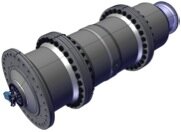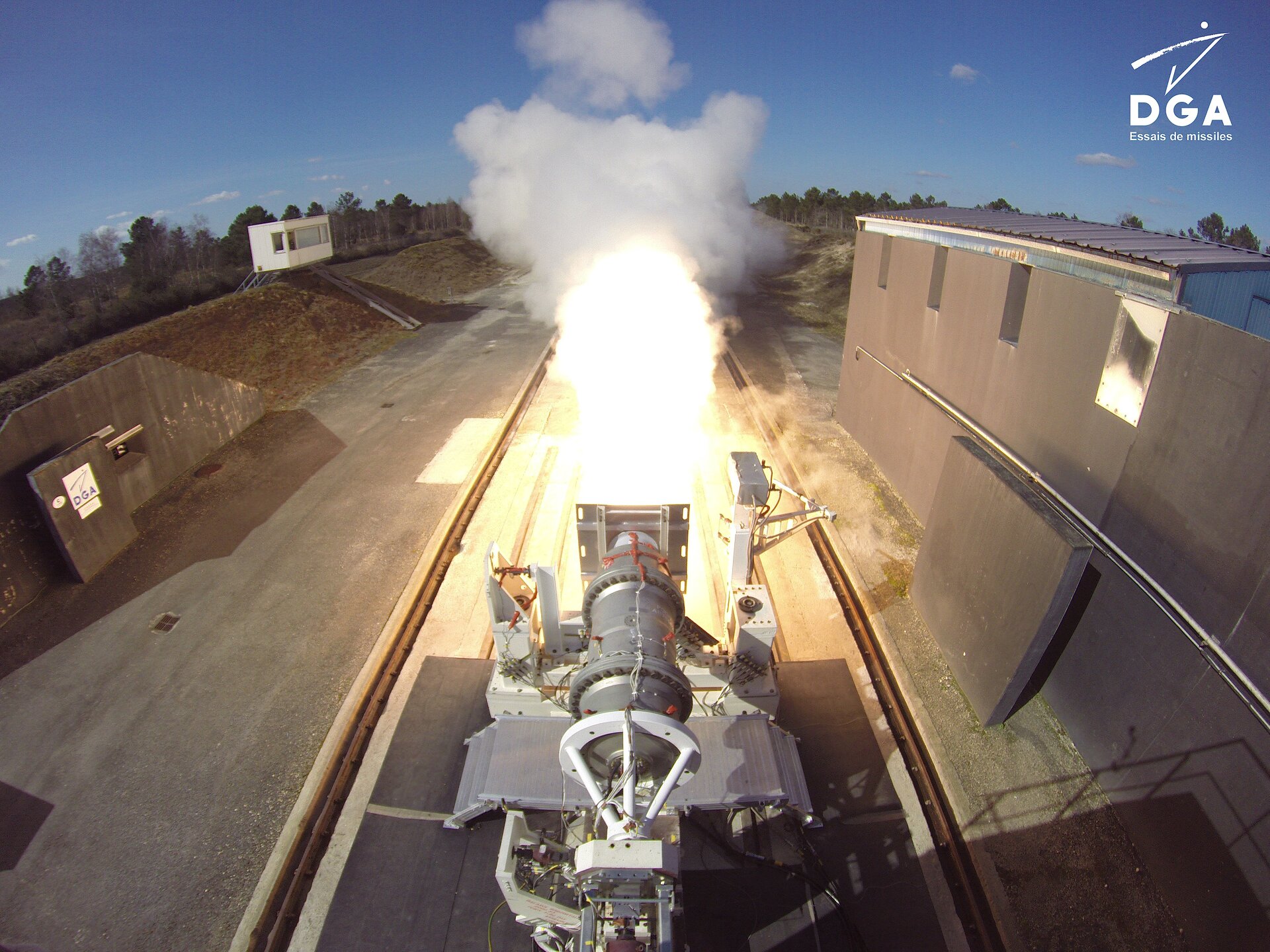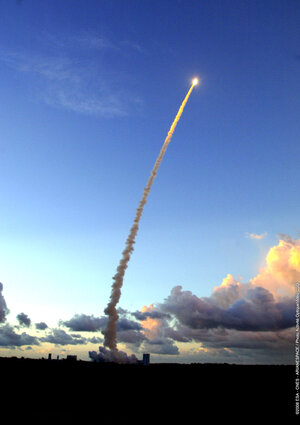Smoother ride on future launchers
Pressure oscillations when a solid rocket motor ignites could be reduced by a new propellant formula and structure.
The forthcoming launch vehicles, Ariane 6 and Vega-C will use a common solid rocket motor, the P120C, still being designed.
The aim is to reduce the size of pressure oscillations inside the P120C by a factor of four compared to the larger segmented Ariane 5 motors. Controlling these oscillations is critical in designing launchers using solid rocket motors to protect launcher systems and payload.
The Pressure Oscillation Demonstrator, or POD-Y, used to study combustion instability, was fired recently at the French military procurement agency test site in Saint Jean d’Illac, France. It lasted 22 seconds at a maximum pressure of 110 bars.
The demonstrator represents the P120C but is a fifth of the size. At 2.8 m long and 70 cm in diameter, it can hold 1100 kg of propellant. Its modular metallic cylinders and domes can be assembled in various ways.
It reuses the metallic cases, geometry and tooling of a previous demonstrator, POD-X, fired in March 2014 for Ariane 5, but has a different igniter and a specific nozzle.

“The POD-X firing recreated the same oscillations observed in Ariane 5 solid boosters. Knowing that we can accurately simulate the environment, we are using POD-Y to confirm our predictions on the behaviour of future boosters,” explained ESA’s Alessandro Ciucci.
“With the new optimised monolithic grain design and propellant formula, we can expect to see steady motor behaviour.”
The test will enable experts to check modelled data against observed results from 38 sensors lining the inside of this reusable demonstrator.
POD-Y is the result of cooperation between ESA’s Ariane 6 programme and France’s CNES space agency.
The motor was designed and built by prime contractor Herakles and partner Onera, with France’s DGA military procurement agency responsible for operations and testing.
Future launchers
At the last Council Meeting at Ministerial Level in Luxembourg on 2 December 2014, the decision was taken to develop a new-generation Ariane 6 rocket and increase the power of the current Vega launcher, to be named Vega-C.
Part of this is the development of the P120C, which will serve as the Ariane 6 strap-on booster and as the Vega-C first stage. Each booster will hold over 120 tonnes of propellant in a composite case measuring nearly 11.5 m long and about 3.3 m diameter.
Ariane 6 will succeed Ariane 5 to provide guaranteed access to space for Europe at a competitive price without requiring public sector support for exploitation. Its debut is scheduled for 2020. Vega-C is scheduled for its first launch in 2018.






